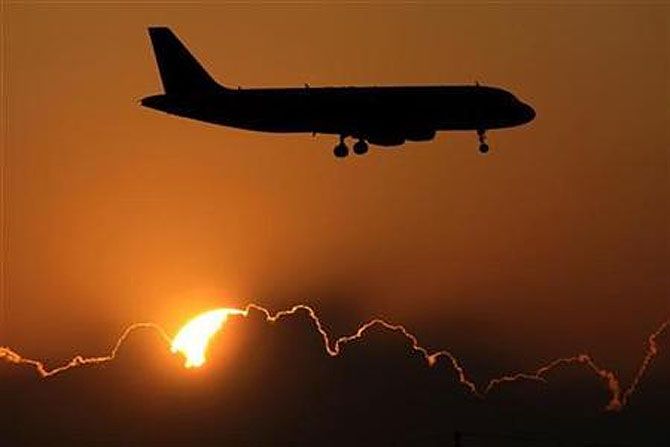'In the domestic market, the industry could actually do with more consolidation.
'Fewer and more efficient players is, in my view, the need of the hour.
'But it is the next moves that the players make on the international routes that could be the clincher.
'The yawning gap in this market left by Jet’s exit is tempting to fill.
'Making hay while the sun shines might seem attractive but is fraught with danger,' says Anjuli Bhargava.

Jet Airways’ abrupt closure may have left many former employees of the airline jobless and many passengers, Jet loyalists and industry observers sad but for India’s aviation sector it has been a blessing in disguise whichever way one looks at it.
Had the airline not downed shutters, I shudder to think what would have happened to the sector as growth in the first half of this year fell to single digit.
CAPA has recently revised its traffic forecast for the year and expects the year on year traffic growth to be less than 5 per cent.
This too is based on an assumption of higher growth in the third and fourth quarter of the year than the first two.
The slowdown that appears to have gripped India’s economy is reflected in aviation too.
International traffic growth has been almost flat and could even show a slight fall by the end of the year, according to analysts.
In keeping with the truly peculiar nature of India’s aviation industry, the industry is poised to make profits for the first time since 2003, in a year when growth is likely to be among the lowest.
CAPA - rather optimistically - estimates an industry profit of $ 500-700 million if things remain good and $ 250-400 million if things don’t remain so good for the financial year ending March 2020.
Jet’s closure has sorted out a number of challenges the industry was facing.
It made available a total of around 2,100 pilots in an industry that was facing an acute pilot shortage.
Almost all the rival airlines have hired Jet commanders (and cabin crew) including those who fly Airbus aircraft like IndiGo and Air Asia India.
A type rating training for six months is on for many of the new recruits.
A second major shortage the airlines were facing was a shortage of flying slots at the metro airports -- in particular at Delhi and Mumbai.
Jet’s exit has freed up 800 weekly slots - most at Mumbai where Jet was based - which have been cornered mostly by the incumbents - SpiceJet, Vistara, Go Air, IndiGo and Air Asia.
This has been both a relief and a boon at these highly constrained airports.
In addition, Jet’s closure helped check the overcapacity in the market as 35 million seats went out of the system overnight.
This has helped improve yields for the remaining players.
However, most of the capacity is being replaced with SpiceJet taking the lead followed by Vistara and Air Asia India (which will be adding as many aircraft to its fleet this year as it did in the first five years of operation).
Most of the capacity in the domestic market is back on offer although no one has yet stepped in to fill the gap left by Jet on international routes.
What has also helped the players so far is that oil has not played truant and the rupee has remained largely stable, even if it hasn't strengthened against the dollar.
These two factors can change the economics for all the carriers, both instantly and significantly.
So where do we go from here?
As I see it, a lot will depend on the players themselves.
If the airlines maintain discipline on fares in the coming quarters, there’s a chance (other factors remaining unchanged) that some of the players would end the year with some profit.
An all-out fare war - as the airlines often find themselves in - could weaken everyone’s balance sheet and leave every player and the industry worse off.
What happens if growth does not recover quickly?
Capacity will have risen, costs will remain unchanged and yields will take a hit.
The gains made in the quarters following Jet’s exit could be reversed rather quickly.
In the domestic market, the industry could actually do with more consolidation.
Fewer and more efficient players is, in my view, the need of the hour.
But it is the next moves that the players make on the international routes that could be the clincher.
The yawning gap in this market left by Jet’s exit is tempting to fill.
Making hay while the sun shines might seem attractive but is fraught with danger.
Air India, which has gained little from Jet’s demise, remains the next big variable for the industry.
With a total of 145 aircraft (including Air India Express), the buyer of this airline will be best placed to fill the gaps left by Jet’s withdrawal from the international sectors.
If I were Vistara or IndiGo in particular, I would chalk out my plans after there’s some clarity on where this sale is headed.
Treading with caution in a world of uncertainties may eventually be the wisest route.
Photograph: Max Rossi/Reuters











